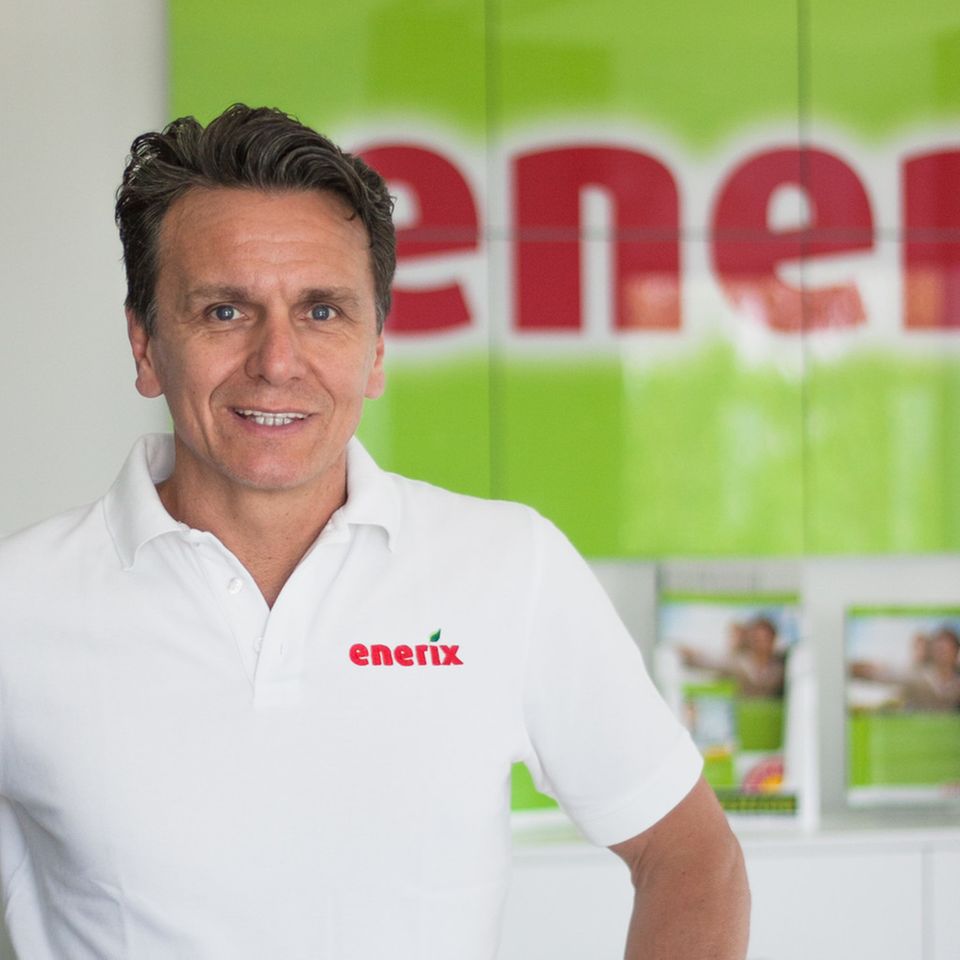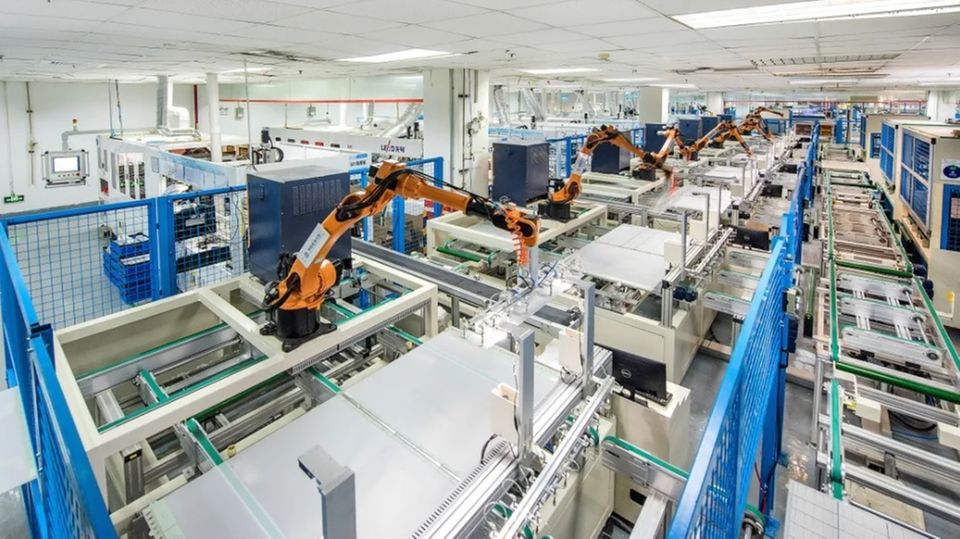Photovoltaics were popular, but now the industry is struggling with customer reluctance and cheap imports from China. Peter Knuth, head of the solar company Enerix, knows how the government could provide stimulus – even without spending a lot of money.
Mr. Knuth, you are not a manufacturer, you co-founded a franchise for solar installation. You are directly in touch with the customer. The solar industry has had bomb years and now you’re talking about one crisis. Where does the crisis come from?
Due to the war in Ukraine and the increases in electricity prices, we have experienced a boom in the last two years. In 2022, demand skyrocketed and with it sales and installation figures. That was around 7.5 gigawatts in 2022. This record was then almost doubled again last year to 14.3 gigawatts. Now the energy transition is stalling and demand is falling. There are several reasons for this: The fear of an insecure energy supply has disappeared again and energy prices have fallen again. On the other hand, financing interest rates have risen from less than one to almost five percent and the hiccups in subsidies have further unsettled consumers. At the turn of the year 2022 to 2023, our order books were full. We had a lead time of several months before we could serve our customers. Now there are only a few weeks left. Current demand is at the level of the beginning of 2021.
If demand continues to fall, will the industry be unable to meet its expansion targets?
Of course, it’s not just the installation companies that are struggling with falling demand. The falling demand is offset by overproduction of modules, especially from China. The price spiral has been moving rapidly downwards since mid-2023 and European manufacturers are suffering as a result. If politicians don’t do something quickly, there will soon be no more domestic module production. The cheapest price I’ve heard in recent weeks for a Chinese-made module was 8 cents per watt. A module made in Germany costs over 20 cents, sometimes even over 40 cents per watt.
I’ll convert that. They say a module with 400 watt capacity from China currently costs 32 euros, one out Germany 160 euros – that’s five times as much. A few years ago, such panels still cost over 300 euros.
Yes, the 32 euros are an absolute dumping price and I can’t say anything about the quality. German manufacturers cannot withstand this price drop. The entire industry is relying more and more on Chinese goods, so in the medium term there will be no more production in Germany. A large module manufacturer with whom we have worked very closely for years is the company Solarwatt from Dresden. Like the company Meyer & Burger, this company has announced that it wants to decide by the middle of the year whether it will shut down photovoltaic production if the government does not stop the flood of Chinese materials.
This is an extreme price drop. For end consumers, prices for a 400-watt panel are also approaching 60 euros. Is this the infamous China subsidy that people always warn about?
The dumping price does not necessarily reach the consumer. These profits often remain with the installers. For this reason, various solar startups are also against the introduction of a resilience bonus.

Peter Knuth is co-founder of Enerix, the first German franchise system in the photovoltaics industry.
But even the Chinese cannot manufacture at this price. They also buy some of their materials on the world market. But no one expected the current situation to happen so quickly. Every market participant was prepared for market growth. China started production and sent the material to Europe. Now the modules are in Rotterdam and demand has fallen. Now 60 to 100 gigawatt modules are lying around there and are being sold at absolute dumping prices so that the warehouses are empty.
They have to go out quickly, because solar technology is also aging due to rapid technical progress.
Yes, these are not top-of-the-line models that are being sold there, but rather the ones that need to come out of storage. The modules make up around 20 percent of the total costs of a PV system. If we buy four or five times the price, it is always at the expense of the installer. The end customer only sees the final price for an entire system. We don’t have branding in the industry. When it comes to heating, many customers would not put a Chinese heater in the basement. Customers are willing to pay more for a reputable name – when it comes to heating.
The shine of the big brand is missing from the solar modules, but are the Chinese panels actually worse?
No. Unfortunately, you have to admit that the photovoltaic technology from China is not really any worse than the well-known manufacturers.
Not worse, but significantly cheaper. How should politics solve the dilemma?
One measure is certainly not enough. There are many construction sites for politics. Let’s take German manufacturers. You buy components on the global market. The items are subject to import duty. But if I bring a complete module to Germany, then not. It currently makes more economic sense to produce abroad.
Modules are an important part of a photovoltaic system. What about electricity storage?
Things are currently different when it comes to electricity storage systems; German manufacturers can still keep up here. But here too we can see a trend that more and more Chinese manufacturers are entering the market. From a technical point of view, the products from the Far East are top and can also be purchased very cheaply. Sometimes one can suspect that the prices are deliberately set so low in order to force German manufacturers out of the market. If we leave the field completely to Asian manufacturers, we will become completely dependent in the long term when it comes to the energy transition. For us installers, it doesn’t really matter where the goods come from, because the margin remains almost the same.
We are talking about systems from domestic production being paid more.
The topic of resilience bonuses is currently on everyone’s lips. A system that is primarily built with German components should receive a higher feed-in tariff. This could be a symbolic incentive for private end customers, even if the share of energy that is fed into the network is only around 20 percent in the private sector.
You say that politicians have to come up with something so that we can keep production in the EU. But that alone doesn’t create demand.
What we need in the entire industry is political stimulus.
In previous years, the impulses came on their own – without any political involvement.
In 2022 it was the high electricity prices, which was then exacerbated by the attack on Ukraine. And of course I don’t want any further crises to arise, but we need impulses. And immediately. Now we are still in the winter break, the solar market starts in March and April when homeowners go out into the garden and see that the sun is shining. One problem is the high interest rates. That’s where politics could start. When the first EEG came into force, the government also offered cheap financing. That was the 100,000 Roofs program. At that time, the building interest rate was between four and five percent and there was a KfW loan of 1.9 percent for photovoltaic systems.
Low interest rates have the advantage that they cost the state little to nothing because they can refinance cheaply.
Yes, a solar loan would cost taxpayers nothing or very little, but the desired effect would still be there. In addition, every private system operator asks himself why you only receive 8.12 cents (since February 1st) for the kilowatt hour fed in, when you pay over 30 cents for the kilowatt hour purchased. In various countries, for example, the electricity meter simply runs backwards when it is fed into the grid.
Or you can build a compensation system that depends on the amount fed in. There is a higher remuneration for the first 1000 kilowatt hours than for the additional kilowatt hours fed in. This would have the advantage that the focus remains on self-sufficiency. Everything is always coupled with a resilience bonus.
Here too there would be a strong psychological incentive, with limited costs.
Yes. Another particularly interesting model is the energy communities in Austria. Energy communities are regional associations of electricity consumers and producers that organize themselves through an association. One neighbor produces the electricity and another consumes it. Even small photovoltaic systems on single-family homes release their residual electricity to the community. The consumer buys the electricity from the community, pays less than from the energy supplier and the solar system operator receives an attractive remuneration. This is a psychological incentive for both parties, like buying regional products. People would rather get electricity from their neighbors than from an energy company.
“Dorfstrom” – you don’t need a big marketing agency to advertise it. There is currently no such thing in Germany?
Not yet, the EU requirement should be implemented in a state law by the end of the year. We’re actually hoping for a bigger boost. Which also does not burden the federal budget.




